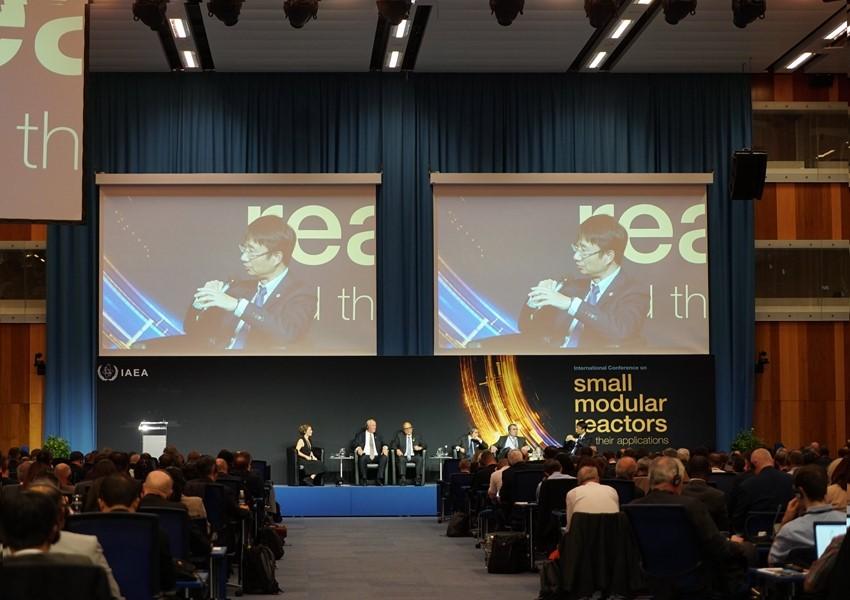
 0 Comment(s)
0 Comment(s) Print
Print E-mail China.org.cn, October 27, 2024
E-mail China.org.cn, October 27, 2024
China National Nuclear Corporation (CNNC) showcased its innovative nuclear technologies at the recent International Atomic Energy Agency (IAEA) Conference on Small Modular Reactors (SMRs) and their Applications held at the U.N. headquarters in Vienna, Austria.
The company presented a scale model of the world's first commercial onshore SMR, Linglong One, and the advanced fourth-generation high-temperature gas-cooled reactor technology.

An aerial photo shows the construction site of Linglong One, the world's first commercial onshore small modular reactor (SMR). [Photo provided to China.org.cn]
These innovations highlight China's advancements in nuclear energy, providing practical solutions for global SMR development.
The conference gathered over 1,200 delegates from 95 countries, covering nuclear design, construction, operations, and investment. CNNC displayed its SMR technology and current projects through models, images, and videos, showcasing China's technical strengths and progress in SMR development.

Zou Zhengyu, general manager of China National Nuclear Power Co., Ltd, under CNNC, speaks at a panel discussion during the International Atomic Energy Agency (IAEA) Conference on Small Modular Reactors (SMRs) and their Applications held at the U.N. headquarters in Vienna, Austria. [Photo provided to China.org.cn]
Zou Zhengyu, general manager of China National Nuclear Power Co., Ltd, under CNNC, emphasized China's pioneering role in SMR technology and construction, citing the 2023 launch of the world's first pebble-bed high-temperature gas-cooled reactor in Shidaowan, Shandong province, and the smooth progress of Linglong One, expected to be operational by 2026. These achievements underline the technical and market potential of China's SMR innovations, setting a strong foundation for international cooperation.
When visiting CNNC's exhibition booth at the event, IAEA Director General Rafael Grossi praised China's contributions to SMR innovation, noting that modular reactors offer a smaller size and faster deployment than traditional reactors, supporting industrial decarbonization, economic development, and global net-zero targets.
Go to Forum >>0 Comment(s)